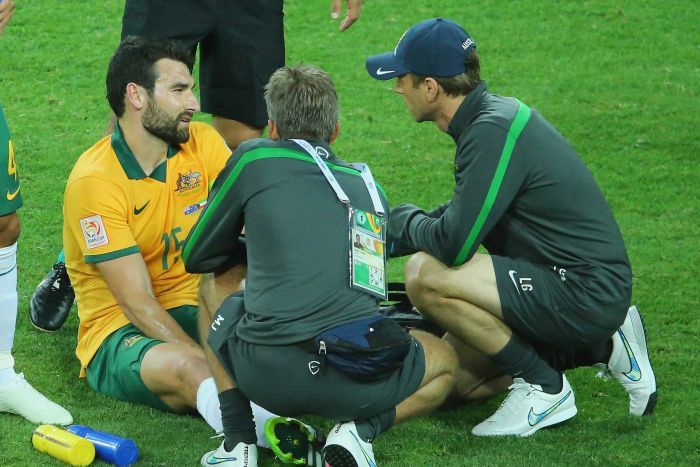
Strategies for prevention of soccer related injuries
Wednesday, April 4, 2018
Football, or soccer, is a hugely popular sport, for all age groups, worldwide. Since we have a continual influx of novice players there are many cases of injury. Sport Medicine Australia revealed that in 2002-2003, 3,270 persons were admitted to hospitals across Australia for soccer-related injuries. The rate of injury for soccer players is said to be up to 35 injuries per 1,000 playing hours.
Evidence suggests that:
- More injuries occur during games than training.
- Up to 35% of injuries are caused by foul play.
- The most common types of injuries are bruising, sprains, strains, fractures and dislocations.
- Injuries to the lower body, namely the ankle and knee, to the upper body and head are most common.
- Common causes of injuries are player contact, falls and tackles.
- The quality of playing areas may contribute to injury.
It is possible and advisable to take injury prevention measures. We will discuss some of them now.
Preseason training
Many injuries are sustained at the start of the season because players are usually out of shape and perform too much too soon. Leading into the season, players should perform light leg and core strengthening and agility training, and endurance exercise, before they need to do the jumps, kicks, jogging and sprinting in season. This helps to prepare the muscles for the complex and unpredictable movements performed during a game.
Stretch out
Muscles that are tense are likely to get inflamed or torn. Ensure that leg muscles and ankle and hip joints are warmed up properly before a game or training. A slow jog would suffice. Stretch after each game or training to help cool down and ease tensed-up muscles. It helps the body rest better, improves athletic performance due to increased muscle readiness, decreases the risk of traumatic or overuse injuries, helps joints move through their full range of motion, and enables muscles to work more effectively. So many benefits!
Knee strengthening exercises
Knee injuries are common in youth soccer; the most of serious of which is an anterior cruciate ligament (ACL) rupture, which equates to 25% of injuries occurring on the soccer field. A serious injury to the knee could put a player on the sidelines for a long period of time, and in some cases, could end a player's career.
- Leg Press: This exercise builds quad strength with no impact and little stress on the joint. You can work your legs together or separately for an additional challenge. Sets/Reps: 4x12.
- Physioball Hamstring Curl: If you're going to strengthen your quads, you need to strengthen your hamstrings to prevent an imbalance. Sets/Reps: 4x12.
- Single-Leg Stance: It may seem simple, but this balance exercise improves knee stabilizer strength and balance. All you need to do is stand on one leg. For an additional challenge, rotate your body slowly to your left and right. Sets/Duration: 2x30-60 seconds, several times a day.
- Bulgarian Split Squat: The Bulgarian split squat is a specific type of unilateral split stance exercise that demands more unilateral balance and strength than a normal split squat (no bench or box). In this exercise, the lifter places their back leg on a bench or box, increasing the demands and emphasis on the front leg muscles and increasing the complexity (balance, strength, coordination, etc.).
- Sets/Duration: 4x12.
Protective gear that fits
Wearing protective gear that is over or undersized is like not wearing any at all. Shin guards and cleats help protect the shin and foot, preventing shin and foot injuries, so be sure to wear the right fit.
Field maintenance
Studies show that approximately 25% of injuries in youth soccer arise from poor field conditions. Officials are technically held for this, but coaches and the players who want to avoid getting injured should inspect the field for rocks, debris, holes, and puddles. Posts too should be inspected.
Fair play
Players hitting or brushing against each other is regular in soccer and it is the responsibility of the referee or official to ensure fair play. The referees protect the players from injuries by blowing against opposing teams in light of aggressive contact; rough tackles. Adherence to rules and regulations by players helps prevent injuries.
Let old wounds heal
It is advised that players should fully recover from previous injuries before resuming training. If players are rushed back into the game, you risk that player aggravating the injury or having an injury setback. When young players are eager to play it's the responsibility of the coach to make sure their players are fully healed before they resume training.

Soccer is a great sport which promotes hard work, team spirit, and self-esteem, not to mention the physical benefits, but injuries can be major set-backs. We highly recommend taking injury prevention measures like pre-season training, warm-ups and stretching before and after exercise, and specific knee strengthening exercises. In addition, regularly check that your gear fits properly and that your field is in good condition. Play fairly and, if you do get injured, be sure to get it under control before returning to training.
